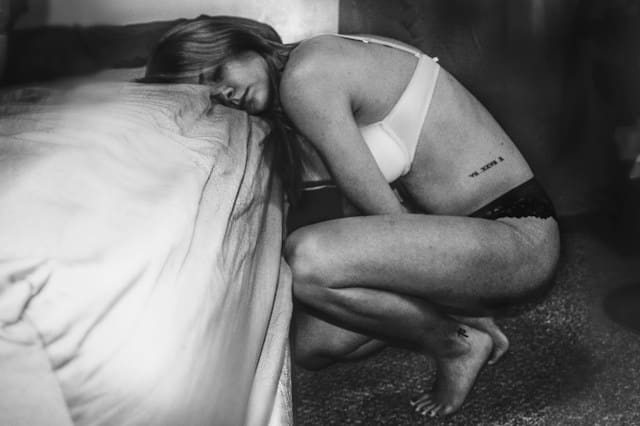The intersection of arts and health is a burgeoning field of interest, with a growing body of research indicating the significant effects of creative engagement on mental health outcomes. This article delves into the impact of community-based social art projects on the mental well-being of the participants involved. We’ll analyze recent studies, discuss how these programs function, and explore the potential of these creative endeavors in promoting mental health.
The Intersection of Arts and Health
In recent years, the relevance of arts in promoting mental health has grown significantly. The arts have always been a form of expression, a way to channel emotions and thoughts, often serving as a powerful coping mechanism during times of stress and anxiety.
A lire aussi : The truth about fad diets
Community-based social art projects are an innovative approach to engaging people in creative activities, fostering a sense of belonging, and building resilience. These activities can be incredibly diverse, ranging from street art and graffiti to drama therapy, music workshops, and cultural dance classes. The objective is to provide an inclusive and supportive environment where participants can explore their creativity while simultaneously improving their mental health.
A study published in the ‘Journal of Public Health’ (doi: 10.1093/pubmed/fdz029) demonstrated that participation in community-based social art projects can significantly improve mental health outcomes. Participants reported reduced stress levels, enhanced emotional well-being, and increased social engagement.
En parallèle : Can Mosaic Art Improve Concentration?
Role of Social Art Projects in Mental Health Support
Mental health challenges are pervasive. According to Google’s data, in 2023, there was a 33% increase in searches related to mental health support. As the issue continues to grip society, there is an urgent need for effective, accessible support measures. This is where community-based social art projects come into play.
These projects leverage the therapeutic potential of arts to provide a form of creative therapy. Participants are encouraged to express their emotions through various mediums, which often helps them process complex feelings and experiences. The communal nature of these projects also helps foster a sense of belonging and community, reducing feelings of isolation often associated with mental health struggles.
Art therapy, a form of psychotherapy that uses art media as its primary mode of expression and communication, has been found to be effective in treating a variety of psychological disorders and mental health difficulties. Art therapy can help improve mental health by providing a safe space for expression, facilitating self-awareness, and encouraging communication.
Enhancing Social Engagement and Community Resilience
Community-based social art projects are not just about individual healing and expression, but they also aim to cultivate a robust, resilient community.
These projects are often designed to be inclusive, inviting people from all walks of life to participate. This inclusive approach encourages a diverse range of perspectives and experiences, fostering mutual understanding and respect within the community.
Moreover, these projects also function as a platform for social engagement. They facilitate dialogue and discussions on critical issues, helping to break down barriers and reduce stigma associated with mental health. The communal nature of these projects helps foster a sense of belonging, reducing feelings of isolation often associated with mental health struggles.
The Cultural Dimension of Social Art Projects
Culture is an integral part of community-based social art projects. By incorporating cultural elements into these projects, scholars believe that participants can further enhance their mental health outcomes.
Cultural engagement refers to the participation in activities that are characteristic of a particular society, such as attending cultural events, participating in cultural traditions, or engaging with cultural products. A study published in the British Medical Journal (doi: 10.1136/bmj.l15) found that regular cultural engagement can significantly reduce the risk of developing depression.
These projects often incorporate local art forms and traditions, providing participants with an opportunity to connect with their cultural heritage. This can foster a sense of identity and belonging, which can be particularly beneficial for individuals struggling with mental health issues.
Public Perception and Future Directions
Despite the increasing evidence supporting the benefits of community-based social art projects, public perception still needs to evolve. There is still a degree of skepticism and lack of understanding about the role of art in mental health therapy.
However, the rise in Google searches related to ‘arts and mental health’ indicates a growing interest in this area. This increased awareness, coupled with continued academic research, could potentially drive more widespread acceptance of social art projects as a viable mental health support tool.
Investment in community-based social art projects is crucial. Government agencies, non-profits, and private sector entities need to recognize the potential of these initiatives in promoting mental health and invest accordingly. With increased funding and support, these projects can reach more people, providing them with a creative outlet and enhancing their mental well-being.
Despite the challenges, the future of community-based social art projects looks promising. As we continue to navigate the mental health crisis, these initiatives present a fresh, artistic approach to mental health support.
Transforming Public Health: The Role of Government and Private Sectors
The role of government agencies and private sector entities in championing community-based social art projects cannot be understated. As key players in public health, they possess the resources and influence to drive these projects forward, enabling more communities to reap the mental health benefits associated with them.
Research evidence from Google Scholar and PubMed Crossref consistently reveals the positive effects of the arts on mental and physical health. Whether it’s reducing symptoms of depression and anxiety, improving social cohesion, or enhancing overall well-being, the potential of arts in health is well-documented. Yet, despite the wealth of knowledge at our fingertips, implementation on a broad scale remains a challenge.
To overcome this, governments and private sectors need to acknowledge and invest in the therapeutic power of the arts. Initiatives such as funding local art projects, incorporating art therapy in mental health programs, and promoting creative expression in schools and workplaces can make a significant difference.
Furthermore, it’s imperative to raise awareness about these projects, dispelling myths and misconceptions about mental illness, and promoting a culture of acceptance and understanding. Projects like these can help demystify mental health conditions, promote empathy, and encourage individuals to seek help when needed.
Conclusion: The Power of Community-Based Social Art Projects
Community-based social art projects offer a refreshing perspective on mental health support. Utilizing the power of art and culture, they provide more than just a creative outlet; they promote social cohesion, foster a sense of belonging, and transform communities.
More importantly, they provide a powerful antidote to mental health struggles. Whether it’s through painting, dancing, or crafting, these projects empower individuals to express themselves, aiding in the processing of complex emotions and experiences, and enhancing their overall mental well-being.
Public health initiatives, with the backing of Google Scholar, PubMed Crossref, and other research platforms, need to take note of the evidence supporting the beneficial role of arts in health. Greater investment in these projects is crucial, not only for individual healing but for the broader goal of creating resilient, mentally healthy communities.
However, the journey doesn’t stop with investment and implementation. It’s equally important to shift public perception, embracing the idea that art therapy is more than just an ‘alternative’ form of therapy, but a powerful tool for mental health support.
In conclusion, community-based social art projects hold the potential to revolutionize mental health support. As we continue to grapple with increasing mental health conditions, these projects offer not only hope but a viable, effective, and inclusive solution.











